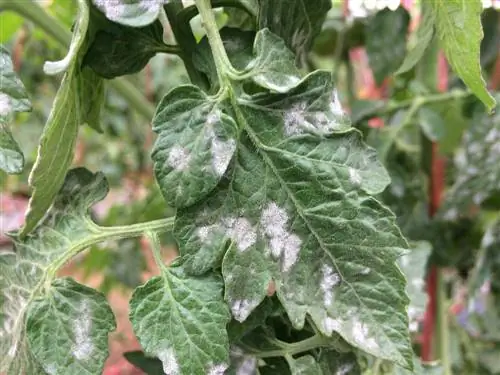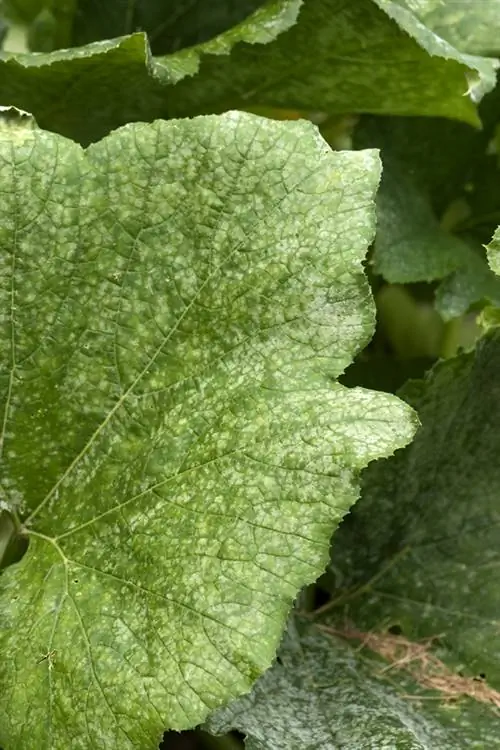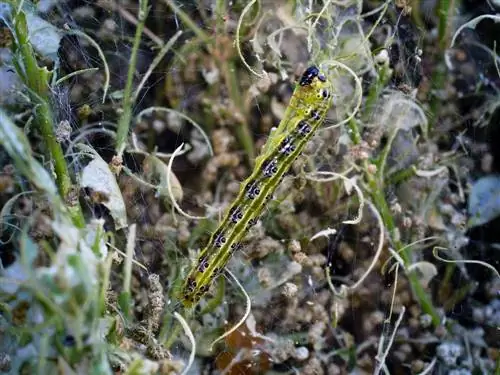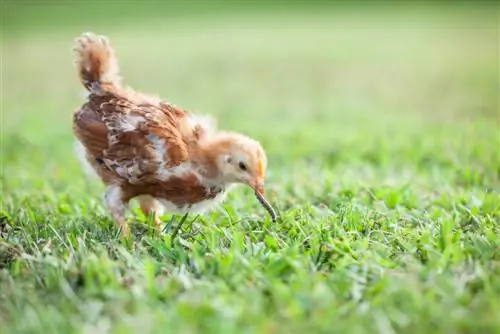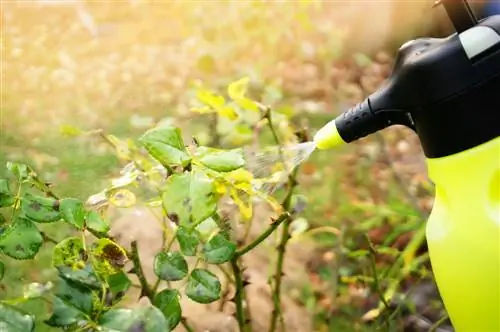- Author admin [email protected].
- Public 2023-12-16 16:46.
- Last modified 2025-01-23 11:22.
Mildew is one of the most common pests on ornamental and crop plants. If not detected or if action is taken too late, the fungus causes the plant to die or at least reduces the yield of crops. Since two different species exist with different life requirements, treatment proves to be very complex. But once you have found out what type of mildew it is, you can use numerous effective home remedies. On this page you will find background information and tips on how to remove the fungus.
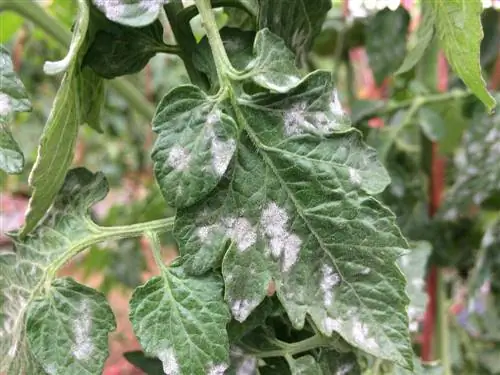
How can you combat mildew in an environmentally friendly way?
Mildew can be combated with environmentally friendly home remedies, such as a 1:9 milk-water mixture, baking soda solution (1 packet in 2 L water with 10 ml oil), garlic broth or field horsetail tea. In addition, predators such as ladybirds, parasitic wasps, earwigs or lacewings help fight the fungus.
When and where does mildew appear?
Mildew is a fungal disease that affects both ornamental and crop plants. Plants that are weakened due to a previous illness or unfavorable site conditions are particularly at risk. The parasite most commonly occurs on the following plants:
- Roses
- Phlox
- Asters
- Indian thistles
- larkspur
- Spindle bushes
- Lilac
- Mahonia
- Maple trees
- Cucumbers
- Grapevines
- Apple trees
- Strawberries
- Carrots
If mildew has found a host plant, its infestation is usually noticeable on the shoots and leaves. Depending on the species, the pest penetrates the leaf or simply sucks the nutrients and water out of the plant. This often results in the plant dying without your intervention.
Powdery mildew (Erysiphaceae)
Powdery mildew is an ascomycete fungus, which is also popularly known as a fair-weather fungus. Why? Because this type of mildew prefers warm, dry climates. Under good conditions, the pest spreads explosively. Otherwise it reproduces through insects and the wind. Powdery mildew only appears on the upper side of the leaves. There is a white coating here that you can easily wipe off with your finger. Although this species does not penetrate the plant, it still extracts nutrients and water from it using sucking processes.
Downy mildew (Peronosporaceae)
The counterpart to powdery mildew is therefore referred to as a bad-weather fungus and lives up to its name with its preference for humid, humid climates. The egg fungus, which is actually a type of algae, eats into the plant and causes great damage. This is noticeable externally in a gray-blue film on the undersides of the leaves.
Damage to the plant
- Discoloration of the leaves
- Drying out the leaves
- Rolling up the leaves
- weak growth
- dry fruits
- popped fruits
- Death of the plant
Fighting mildew
A powdery mildew infestation that is detected too late or is not treated leads to the death of the plant in most cases. In any case, the pest greatly reduces the appearance. The simplest solution would be to use a chemical fungicide, given its quick and reliable effect. However, if you consider the long-term consequences of such treatment, it quickly becomes clear how harmful such products are. On the one hand, the plant itself suffers great damage. If it is a fruit-bearing plant, it is no longer edible after chemical treatment for he alth reasons. Additionally, the rainfall washes the toxins into the soil and spreads throughout your garden. This means that other plants and animals that prove to be quite useful in the local biotope are also affected. Fortunately, there are numerous methods to remove mildew in a natural, environmentally friendly way:
Basic measures
Mildew has an easy time of it if the plant is already weakened due to an unfavorable choice of location. Therefore, you should take the requirements into account when planting. A strong plant can self-sufficiently deter a mild infestation. It is very important that there is sufficient planting distance so that there is still good air circulation.
Home remedies
The following solutions can be made inexpensively and are also completely environmentally friendly:
- Milk (mix 1:9 ratio with water)
- Soda (dissolve 1 packet in 2 liters of water with around 10 ml of oil)
- Garlic (1 clove in 1 liter of boiling water)
- Field horsetail (choose 300 g of fresh or 30 g of dried field horsetail with hot water in a ratio of 1:5)
Predators
Would you like to make the fight against mildew as effortless as possible? Then it's best to leave it to predators like
- ladybugs
- Parasitic wasps
- Earworms
- or lacewings
the work. Either you attract the beneficial insects to the garden yourself or you purchase a population from specialist retailers. The predators do not harm your plant itself.

